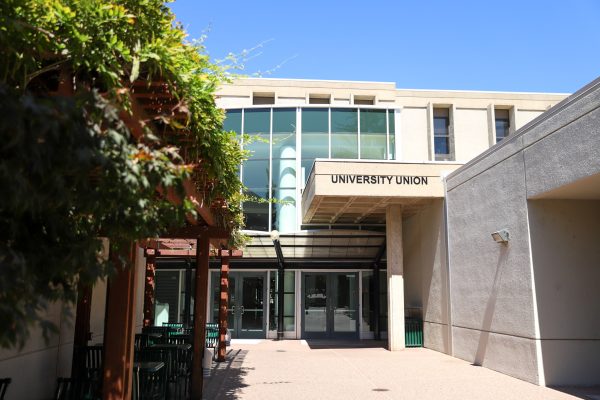Committee wants to end commuter school brand
October 30, 2013
Despite being involved in a wide variety of campus programs, Ishmael Pruitt said Sacramento State is commonly referred to as a commuter campus for a reason.
Pruitt, a 21-year-old criminal justice major, said although he has seen improvement since he stepped onto campus in 2010, the overall participation of students on campus is fairly low in organizations, campus housing and activities.
Sac State President Alexander Gonzalez created the Committee to Build Campus Unity in 2011 as a way to not only move away from the commuter school image, but as a preventative measure to avoid tensions within the campus’ community.
“The Senate approached me about a convocation to focus on some very important issues facing Sacramento State, as well as university campuses across our nation,” Gonzalez said in an email to the campus for the inaugural event.
Gonzalez appointed members who represented students, faculty and staff across the campus and together they put on events allowing people to come together where they normally would not.
“People would come in and kind of go away. There wasn’t a sense of community,” said Kimo Ah Yun, the committee chair and associate dean of the College of the Arts and Letters. “The Senate wanted to find ways to enhance campus unity, set around the idea that the demographics of our campus really lends itself to be more of a commuter school.”
Ah Yun said the Senate asked Gonzalez if he could create opportunities for Sac State to gather and engage in conversation topics that were difficult to discuss.
“At the time, there were a lot of cases in the media about bullying, and that was a hot topic but even beyond bullying we talk about race, sexism, classism and other difficult cases,” Ah Yun said. “The campus committee was a response to that. Gonzalez gathered faculty and student representatives to engage in difficult topics and to have something that was ongoing.”
Janet Hecsh, chair of the Faculty Senate and a member of the committee, said one of the goals of the committee is to break silences and create spaces for people to talk to each other.
“A campus like ours was designed for people who came to campus and went home and for all that discourse to take place in classrooms, so we don’t have a lot of places on campus for folks to come and talk to each other,” Hecsh said. “What the committee did was take advantage of the President’s ability to call a convocation to come together around this one idea.”
Mai Nguyen, graduate student representative and program advisor for Student Organizations and Leadership, said campus unity is a matter of staff members working together to make students feel like they are a part of a community.
“I think this campus has a lot of potential and has a lot to offer, and I think what a lot of what departments are doing has the same end goal, which is to create campus unity,” Nguyen said.
Pruitt said his group of friends on campus are very diverse, but there is potential for tension in the classroom.
“Public schools are taught from a Eurocentric point of view, and minorities adapt to the discomfort,” Pruitt said. “In ethnic studies classes and African studies classes there is a new tension and discomfort amongst those who are not the minority being taught.”
Committee member, professor and director of Asian American Studies Tim Fong said the whole point of the committee is to try to look at a variety of issues in order to get people together and feel comfortable.
“We’re a very diverse campus, which we’re very proud of,” Fong said. “At the same time, there’s a lot of places where the diversity becomes problematic or challenging.”
Ah Yun said the committee meets roughly once a month and has one large and several smaller events throughout the semester.
“It’s a slow process, but the events help get people acclimated to doing that,” Ah Yun said.
Pruitt said coming to a university can be intimidating and having a community will make them feel welcomed and increase the likelihood of them getting involved.
“It is nice, because it makes people feel like they’re a part of something bigger,” Pruitt said. “Having a community creates a sense of dependency where students feel comfortable going to each other for help.”








































































































































